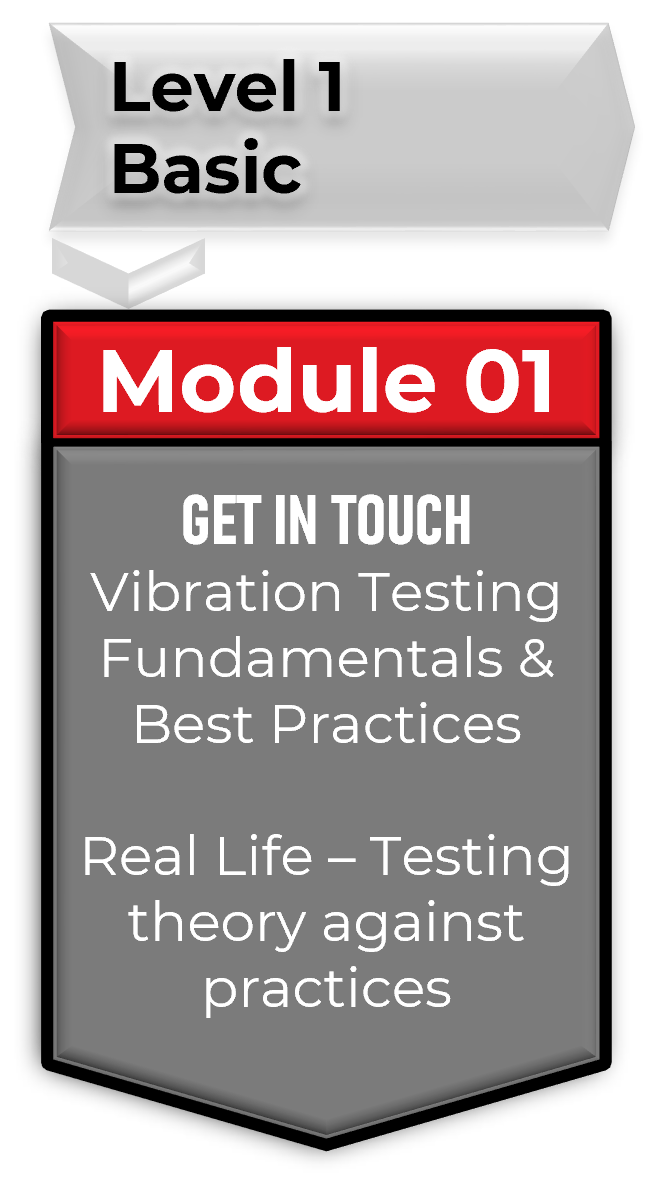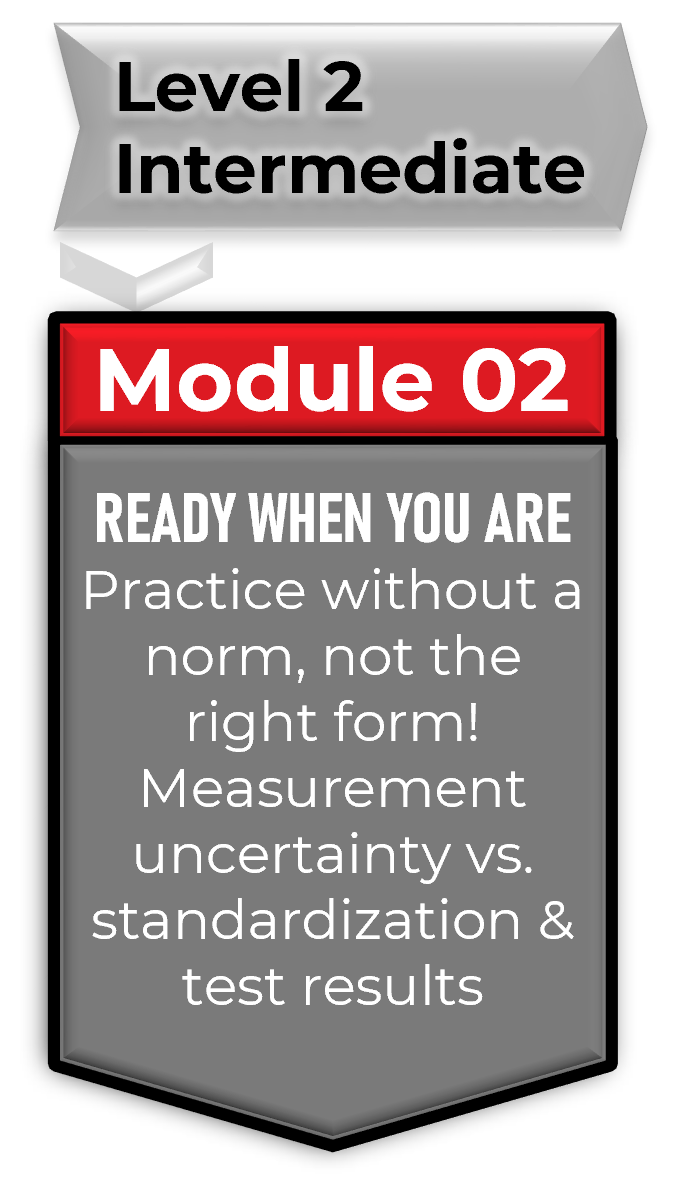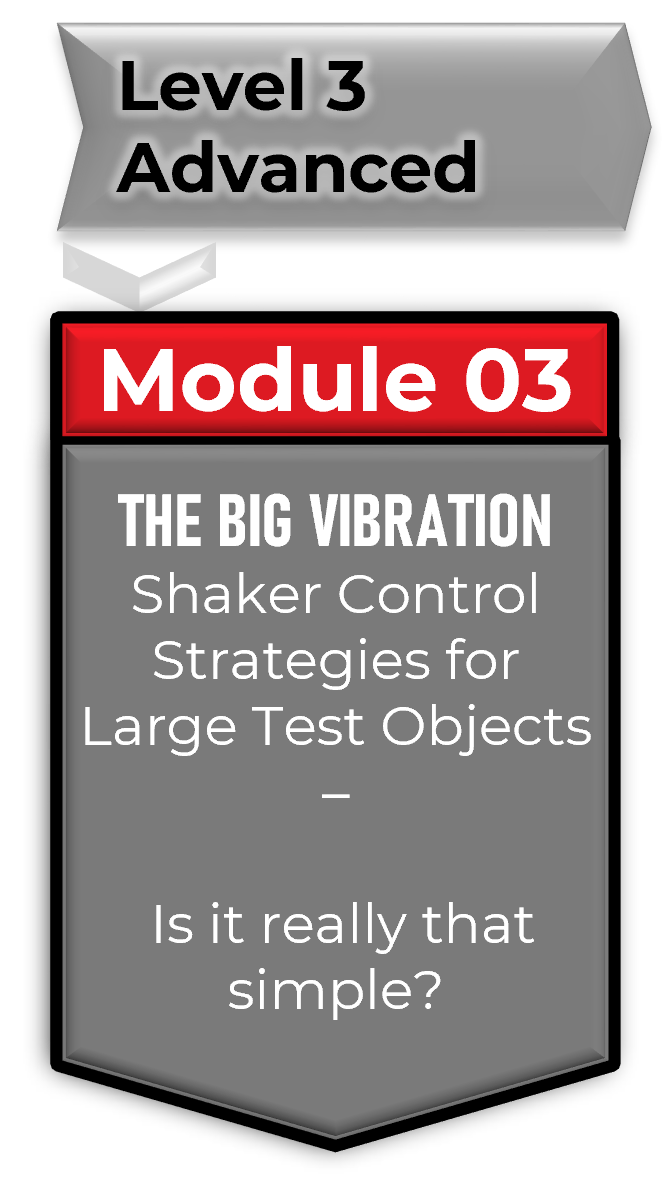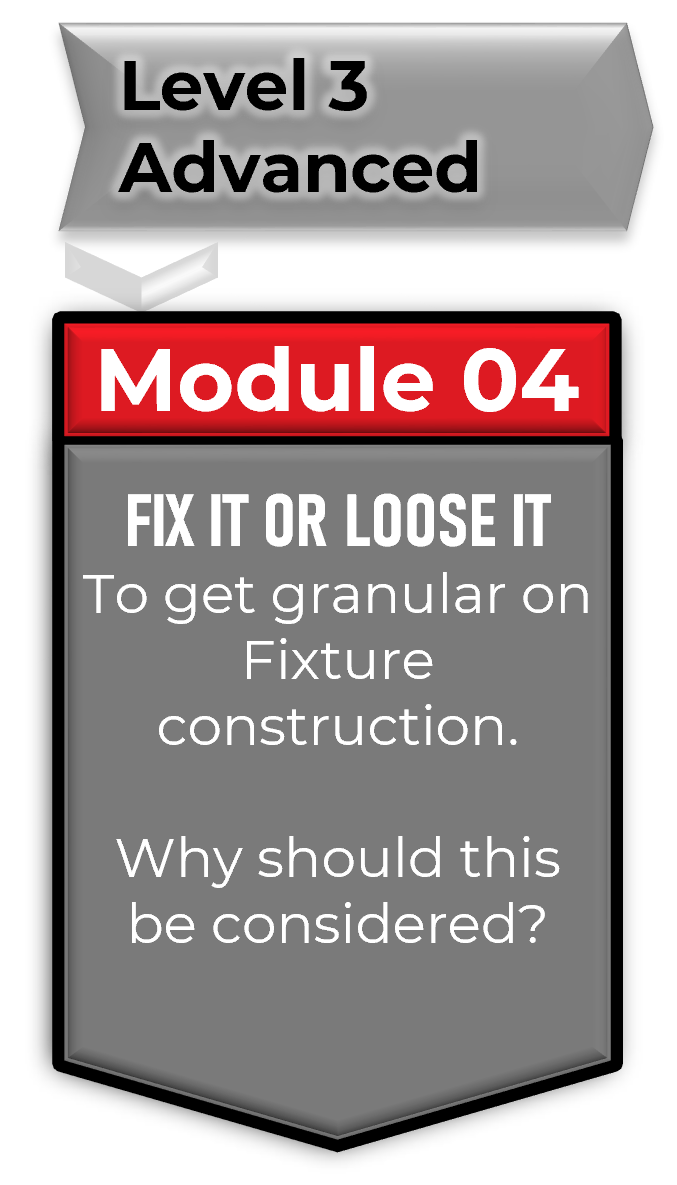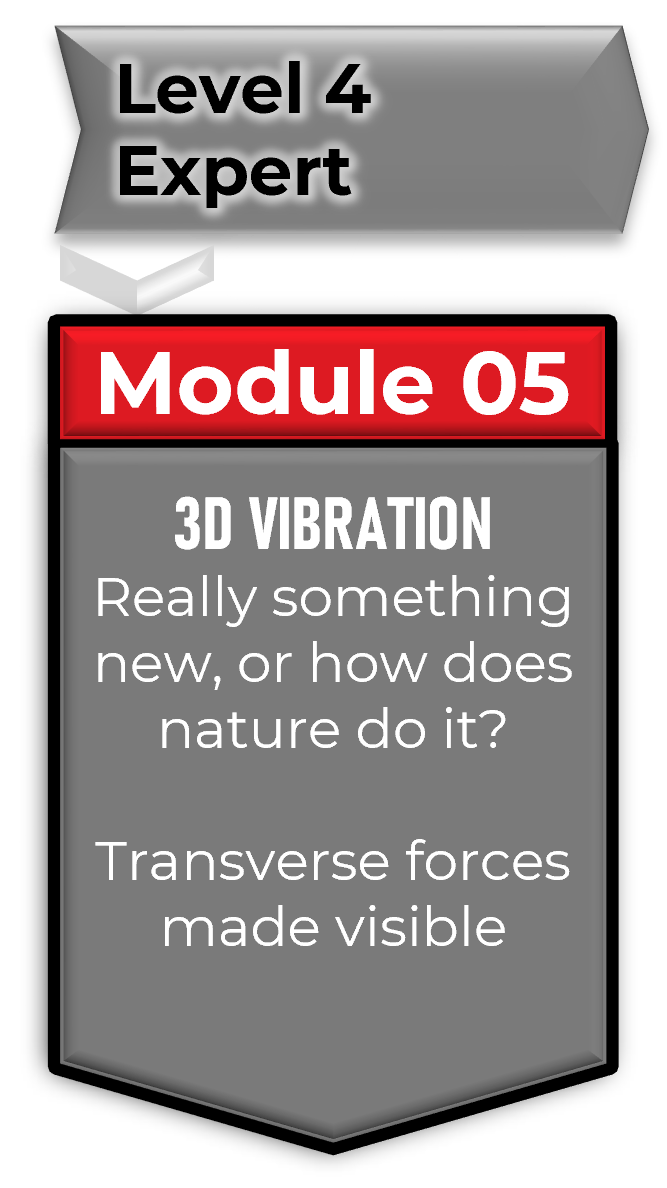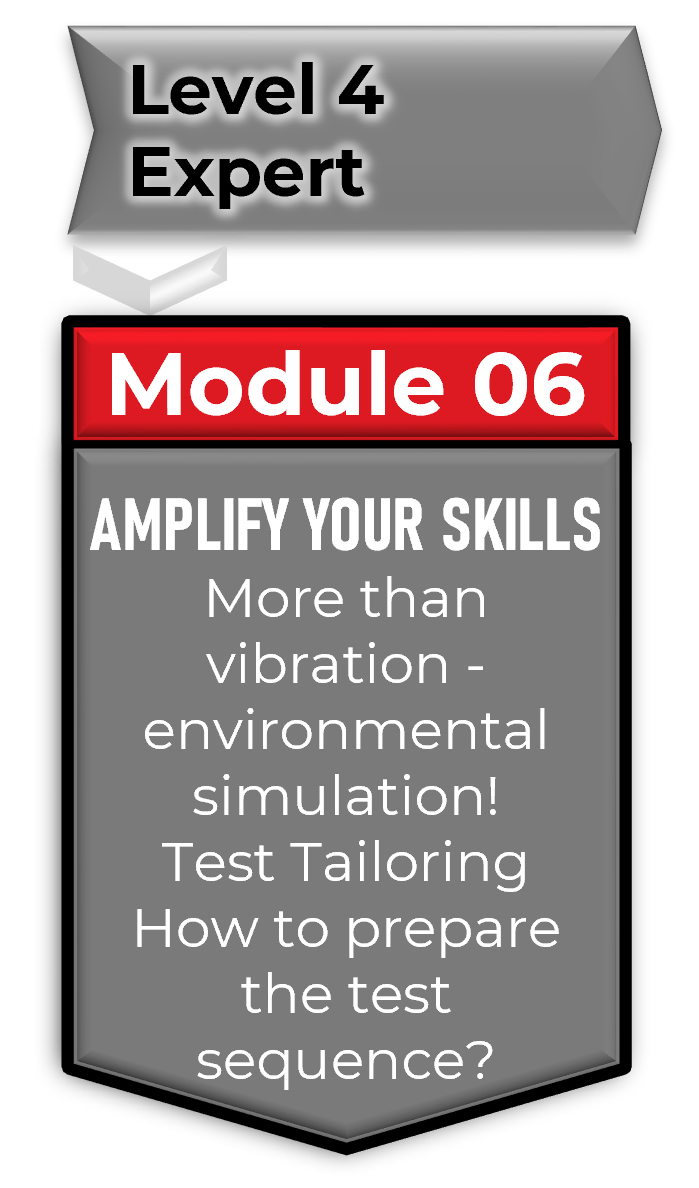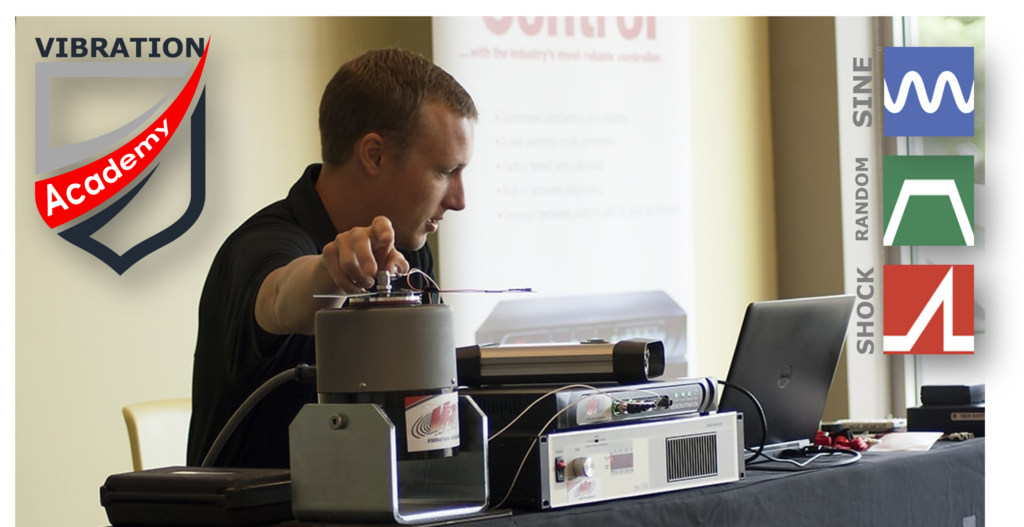
Do you perform vibration tests on a electrodynamic shakers? Do you ever feel you are just trying to setup tests following ISO or MIL standards but want to know what the deeper meaning is and how you can define your tests more accurate and how to make them represent more the real time environment of your product? Then you came to the right place to learn all about vibration tests and how to optimize them.
The Vibration Academy has been developed in partnership with the VRU (Vibration Research University).

Welcome to our comprehensive training program on vibration testing, developed in collaboration with Vibration Research. Whether you are performing vibration tests on an electrodynamic shaker or striving to align your testing processes with ISO or MIL standards, our program offers a deep understanding of the underlying principles.
Gain insights into defining tests more accurately to mirror real-time environmental conditions for your products.
Designed for individuals ranging from beginners to aspiring experts in vibration testing, our training program is divided into four blocks, progressing from foundational knowledge to expert proficiency. Elevate your capabilities as a vibration engineer and enhance your effectiveness in the field.
For vibration engineers operating in accredited laboratories, our program ensures that you receive the necessary training to demonstrate compliance with accreditation standards.
Our modules are meticulously crafted to align with the requirements of each relevant certificate and accreditation level.
1. **Skill Evaluation:** Each course begins with a thorough skill evaluation to determine your qualifications and guide you to the appropriate module. If you find that you do not yet meet the criteria, rest assured; you have the option to continue or start at a lower level, providing flexibility in tailoring your training to your specific needs.
2. **ISO17025 Compliance:** Our training modules are meticulously mapped to the requirements of ISO17025, offering a seamless alignment with industry standards. This ensures that you are well-prepared for audits.
3. **Certificate Management:** To simplify the certification tracking process, Vibration Research has integrated a feature into their app. This tool allows you to effortlessly monitor and manage your certificates for each completed module, streamlining the audit preparation process.
Choose our training program to gain a comprehensive understanding of vibration testing, from fundamental concepts to advanced methodologies, and elevate your proficiency as a
vibration engineer.
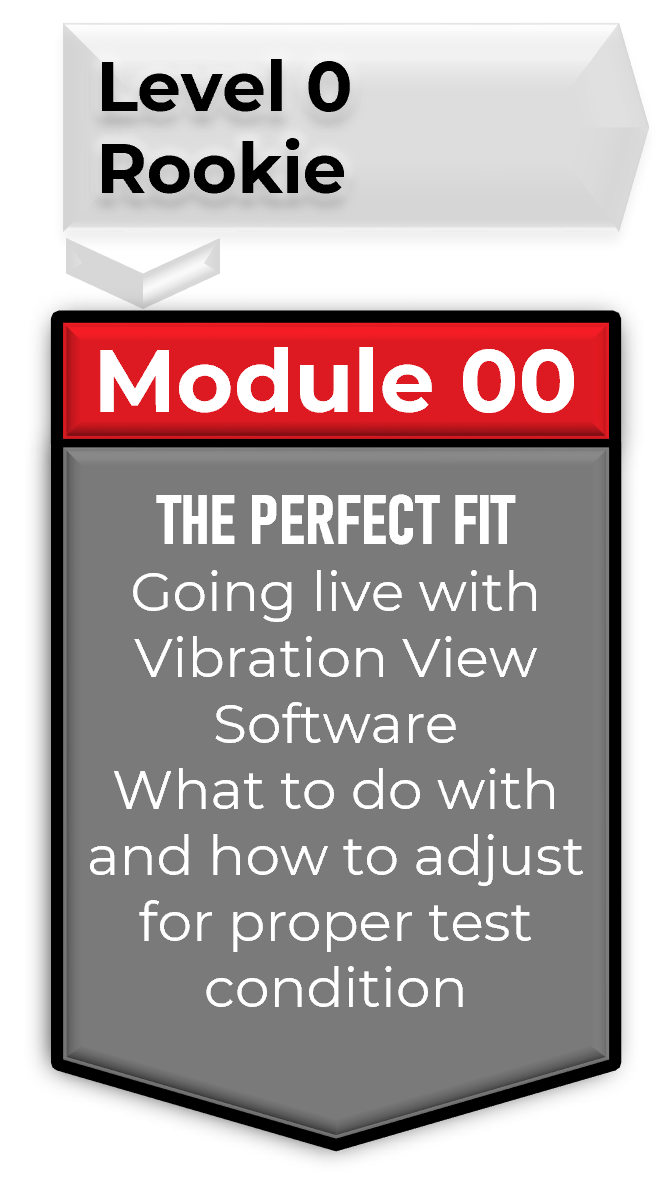
Goal: Acquire basic knowledge about operating and adjusting VR control software for your testing conditions.
Prerequisite: None
Content: During this workshop, you will acquire extensive knowledge about the correct settings for Sine, Random, and Shock, as well as other details that require your attention.
You will gain insight into testing with Sine, Random, and Shock profiles and understand their relationship with the shaker. You will learn what and how to test. Additionally, you will familiarize yourself with the operation of mechanical environment simulation and the meaning of the term “transfer function.” A connection will be made between FFT analysis and your testing conditions.
Furthermore, you will receive an overview of various control strategies, such as Single, Average, Min/Max, and Weighted, with practical examples. You will discover which control strategy is most suitable for your situation. You will also gain insight into your controller and understand why adjustments may be necessary.
The workshop also covers the creation of profiles in accordance with IEC 60068-2-6,27,64. You will learn why the sensor is the joystick for your controller and what the term “sensitivity” entails. Additionally, the necessary hardware and sensors for control will be discussed, along with considerations for systems with digital inputs/outputs. Attention will be given to what is required for Plug & Play functionality.
By participating in this training, you will gain access to our tutorials and workshops. A wide range of topics with comprehensive support related to the shaker is offered here. Take advantage of these information resources to customize the shaker to your preferences or update your knowledge, enabling you to become the expert within your organization.
